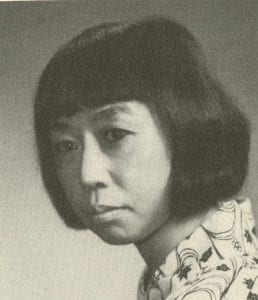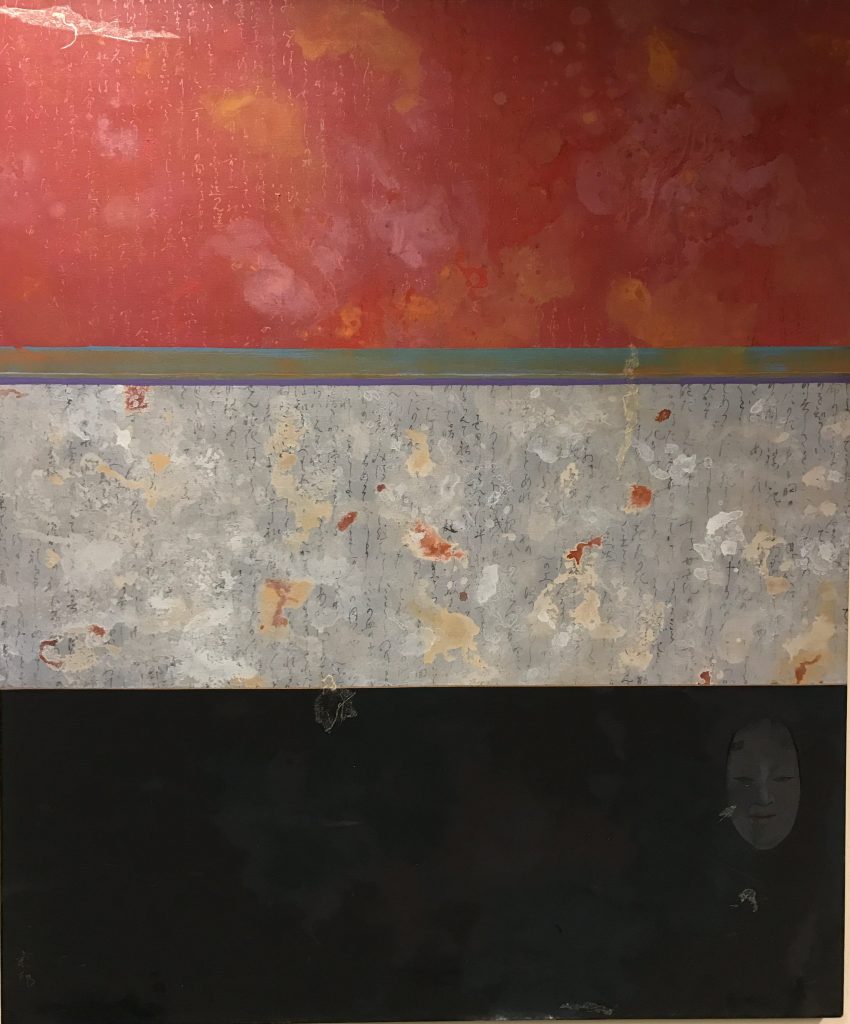Art is All Around Us!
The next time you are browsing the stacks in the library on campus, take a look at some of the beautiful artwork on the walls. There are more than fifteen examples of fine art on display inside the Penn State Harrisburg Library. Four of these paintings in the library include acrylic on canvas works created by Japanese-American artist, Maya Matsuura Schock (1928-1975). They are pictured above (Untitled Diptych) and below (The Journey Within #38 and #39) and were previously located on the 2nd floor of the library. As of summer 2022, the paintings were removed from public display and placed in the archives to protect them while portions of the library are being renovated.
Born in Osaka, Japan, on August 7, 1928, Maya Matsuura studied Kabuki and Noh drama beginning at age 10. She attended Baika Women’s College in Osaka where she participated in the student theatre program. At age 21, the artist moved to Tokyo in order to train as a classic ballet dancer and actress. Unfortunately, due to an impaired diet, she did not develop as a dancer. However, author Peter Carnahan in his book, Opposable Lives: Volume One of an Autobiography, described Schock as a creative force with a “drive to express artistically” (Carnahan, 521).† She married an American named Floyd R. Schock and moved to the United States in 1956. While in Pennsylvania, Schock studied at the York College of Art in York, and later at the Pennsylvania Academy of the Fine Arts in Philadelphia. In May 1972, she opened her own gallery, the Gallery DŌSHI (later named the DŌSHI Gallery for Contemporary Art), and Japanese tea shop in downtown Harrisburg. The Gallery DŌSHI was the first non-profit, permanent, contemporary art gallery in the city and was located at 2nd and Reily Streets. Using the Japanese word DŌSHI, which means “fellowship,” as part of the gallery’s name, Schock became an advocate for contemporary artists in the region. She also taught and inspired other local artists, such as Mary Hochendoner, through her “Doshi Academy.”
Schock is known for her large, abstract, and colorful series of paintings, which she considered autobiographical, and entitled the series “The Journey Within.” The Penn State Harrisburg Library has two examples from this series, #38 and #39, which are on display and on loan from the private collection of Dr. David Bronstein. Each large canvas measures 60 inches high and 50 inches wide and is unframed. Like many of the paintings in the series, The Journey Within #38 and #39 both feature a Japanese Noh mask in the bottom right corner of each composition. These masks were—and still are—used by actors during Noh theatre art, which is “Japan’s performing art combining dance, music, drama, poetry and masks.”†† Noh is one of the world’s oldest extant performance traditions.
Schock’s works are in various private and public art collections, including the Philadelphia Museum of Art and the State Museum of Pennsylvania in Harrisburg. Although Schock died on September 17, 1975, her legacy and fellowship continue on through the work of the Susquehanna Art Museum and the Doshi Open Studio.
†Carnahan, Peter. Opposable Lives: Volumes One of an Autobiography. Self-published, Xlibris, 2009.
††The International Noh Institute, WordPress blog homepage, accessed August 2022, https://internationalnohinstitute.com/.




